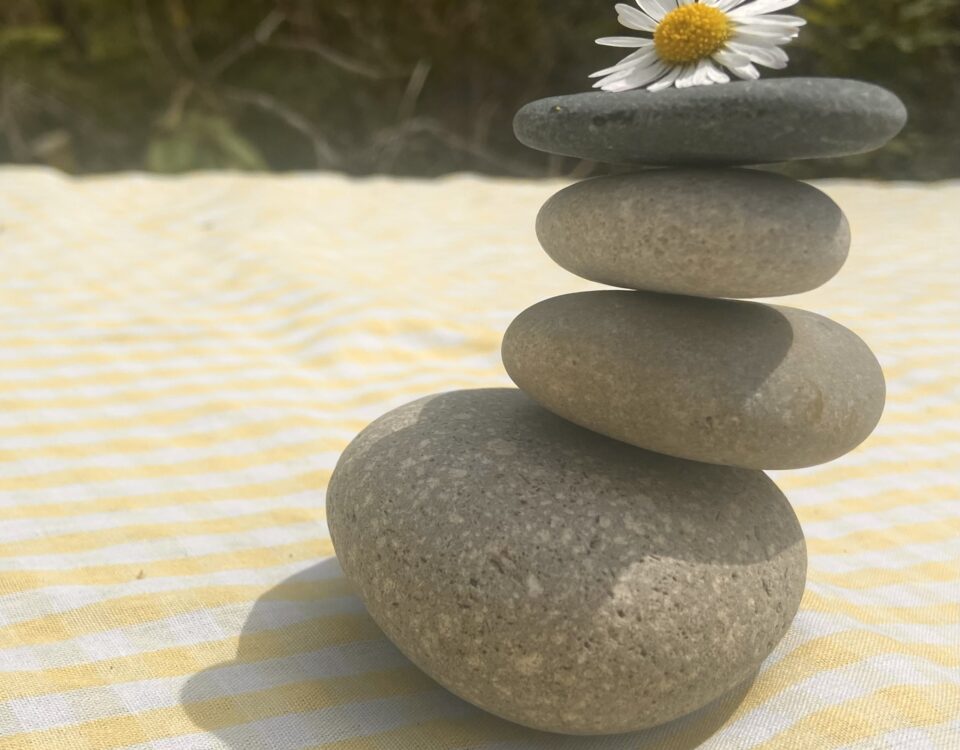Parkinson’s in Translation
May 11, 2011Step Back
May 26, 2011Thread the Needle Pose Modifications
Thread the Needle pose releases tension in the shoulders and neck, opens up the scapular muscles and rotates the vertebrae in the upper back. These are key areas to target in people with Parkinson’s. They are also common areas of rigidity in others with restricted movement.
And when the neck and shoulders are tense, it can be difficult to relax elsewhere and can even trigger tension further down the spine.
The traditional expression of the pose, however, may not be a good match for someone with a movement disorder. Getting down to the mat to start in table position, for example, can be a challenge for some. In addition, balance becomes precarious after releasing one hand from the mat.
Modified, this pose offers the benefits of the full pose but from a more stable base position.
Standing Variation
 This first variation to Thread the Needle pose begins in a Tadasana, Mountain pose. Place your mat perpendicular to a wall or place a chair on one end of the mat with the seat facing away from you. (Make sure that all four legs of the chair are on the mat. This prevents the chair from slipping.) Step close to the wall or chair back.
This first variation to Thread the Needle pose begins in a Tadasana, Mountain pose. Place your mat perpendicular to a wall or place a chair on one end of the mat with the seat facing away from you. (Make sure that all four legs of the chair are on the mat. This prevents the chair from slipping.) Step close to the wall or chair back.
- From Tadasna, place your palms on the chair back or at shoulder height on the wall.
- With slight pressure in your hands, step the right leg back.
- Step the left to meet it and release the pressure from your hands into your feet, pressing down through the heels.
- Inhale, lengthen the spine, and on an exhale, hinge from the hips until your ears are in line with your shoulders. Note that your hips are directly over your ankles.
- From this half-dog position, release the right hand and on an exhale, sweep it under the left arm. Allow your right knee to bend slightly, keeping your weight even on both legs, left leg still aligned with hip over ankle.
- Following your right hand with your gaze, rest your right palm on your left hip or thigh, extending through the fingertips. Remain for a cycle or two of breath.
- To release, inhale your right hand back to the chair back or wall, straightening your right knee.
- Repeat for the left.
- When complete, from half-dog pose, inhale as you step the right leg forward. Bring the left to meet it. Bend your knees and, pressing down through your feet, straighten back into Tadasana.
- Allow a cycle of breath to flow, noticing any shifts, releases, calm in your body.
Seated Variation
This second variation is a seated version of Thread the Needle pose. Place your mat perpendicular to a wall, your chair on the mat, just under your arm’s distance away. The chair seat faces the wall.*
- Begin in seated Tadasana, or seated Mountain pose.
- Place your palms on the wall at shoulder height, elbows slightly bent. Spread your fingers wide.
- Pressing into your finger pads, exhale as you straighten your arms and hinge forward from the hips.
- Bring your ears in line with your shoulders. Press into the wall through your fingers while pressing your tailbone into the chair.
- From this seated half-dog position, follow the same steps as the standing half-dog variation.
- When complete, release your arms and let your palms rest on your thighs as you exhale, rounding your back into cat pose.
- On an inhale, slowly round up, back to seated Tadasana
- Allow a cycle of breath to flow, noticing any shifts, releases, calm in your body.
*This variation can also be done facing another chair rather than a wall. The other chair back faces you and you can place your hands on the chair back.
An additional benefit of this pose, particularly to stroke recovery individuals, is the extension of each arm diagonally across the body. This crossing of the mid-line of the body can be therapeutic to
retraining the sense of where are limbs are space around them.
These variations also do not drop the head below the heart, which allows people with autonomic nervous system issues, glaucoma, or high blood pressure the opportunity to benefit from Thread the Needle pose.
Enjoy the release it brings outside and the peace it brings inside.


